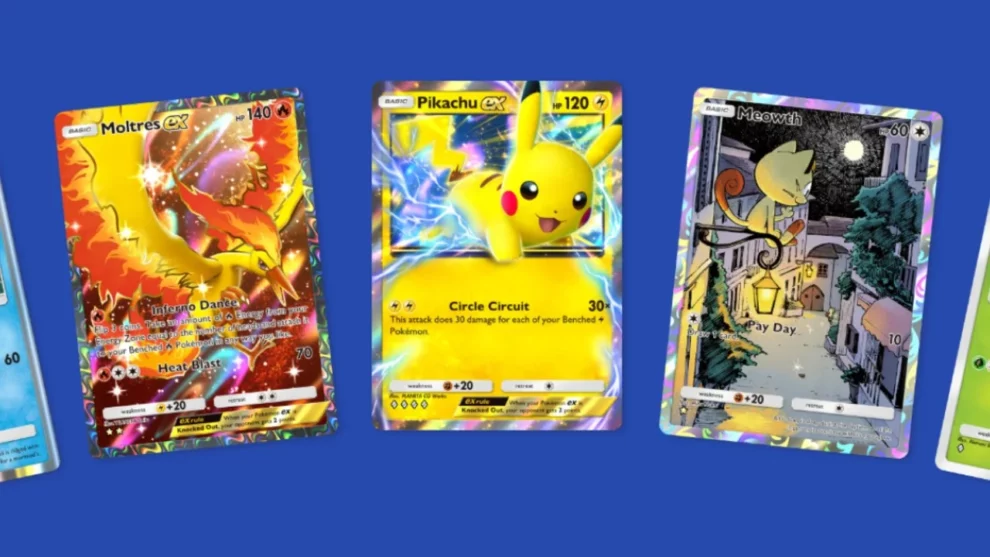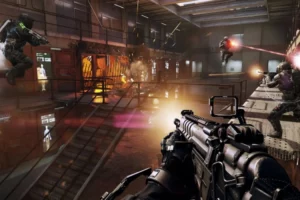The Pokémon Company’s latest mobile offering, Pokémon TCG Pocket, has implemented an extraordinarily complex monetization system featuring an unprecedented array of twelve distinct currencies – a number that continues to grow. This labyrinthine approach to in-game economics has sparked concerns about the game’s accessibility, particularly given its appeal to younger players.
The free-to-play mobile adaptation of the beloved trading card game has achieved significant success since its launch, but its complicated currency system has become a focal point of criticism. Players must navigate through a bewildering array of virtual currencies, ranging from basic Poké Gold to specialized tokens like Event Shop Tickets and Genetic Apex Emblem Tickets, each serving distinct purposes within the game’s economy.
The complexity of this system becomes apparent upon delving into the game’s shop interface, which presents players with a maze-like structure of menus and sub-menus. The currency management system is so intricate that even accessing the full list of available currencies requires players to navigate through multiple screens, starting with an inconspicuous three-line button on the main page, followed by an easily overlooked “Items” option beneath the shop menu.
What makes this system particularly concerning is its apparent design philosophy. Industry observers note that the multiplication of currencies appears deliberately crafted to obscure the real-world value of in-game items and create artificial scarcity. This becomes evident in the game’s treatment of Special Shop Tickets, which players can only obtain by sacrificing multiple copies of extremely rare full-art cards – some with drop rates as low as 0.013 percent.
The game’s premium items often require specific currencies in quantities that seem carefully calculated to encourage additional spending. For instance, premium cosmetic items like black-and-silver sleeves, playmats, and coins require 12 Special Shop Tickets each, while the most basic items still demand seven tickets. Given the rarity of the cards needed to obtain these tickets, the system appears designed to push players toward making multiple purchases to achieve their desired customization options.
Adding to the confusion is the game’s inconsistent handling of currency information. Some currencies, like Pack Points, don’t even appear in the game’s main currency listing, instead only showing up in specific contexts such as pack opening screens. This fragmented presentation of information makes it challenging for players to make informed decisions about resource management.
The complexity extends to the shop’s structure itself, which features multiple sections with identical names but different contents. The shop includes two separate “Other” sections – one in the “Main” section and another in a different area – both mysteriously empty but presumably intended for future content. This lack of clarity and consistency in the interface design further compounds the confusion surrounding the game’s economic system.
More concerning is the game’s approach to future currencies and features. Some items, such as the Advance Ticket, are already present in players’ inventories but come with cryptic descriptions that offer no insight into their eventual use. Rather than providing clear information about upcoming features, the game simply tells players to “Wait and see what it’s for!” – a approach that seems at odds with transparent game design principles.
The implementation of multiple currencies in free-to-play games is not a new phenomenon, but Pokémon TCG Pocket’s approach stands out for its exceptional complexity. The system appears designed to create artificial barriers and psychological triggers that encourage spending, utilizing techniques common in mobile gaming but implemented here with unprecedented intricacy.
The timing and context of this monetization strategy have drawn particular scrutiny given the Pokémon franchise’s significant young audience. The combination of complex systems, unclear value propositions, and psychological manipulation techniques raises questions about the responsibility of major gaming companies when designing monetization systems for games that appeal to children.
As the game continues to evolve, with hints of additional currencies and systems yet to be implemented, the community watches with growing concern. The success of Pokémon TCG Pocket demonstrates the enduring appeal of the franchise, but its complicated approach to monetization may serve as a cautionary tale about the balance between profitable game design and player-friendly systems in the mobile gaming space.
The situation has sparked broader discussions about the need for greater transparency and simplification in free-to-play game economies, particularly in games marketed to younger audiences. As the mobile gaming industry continues to evolve, the example of Pokémon TCG Pocket’s currency system may influence future conversations about ethical monetization practices in games targeted at children.
















Add Comment